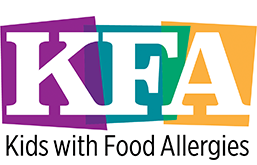The Food and Drug Administration (FDA) updated their food allergen labeling guidelines. The new guidelines include changes to tree nut, milk, and egg labeling.
The guidelines took effect on Jan. 5, 2025. But foods packaged before that date may be on the shelves and have older labeling for a while. Be sure to read every label every time.
What Is FALCPA and the FASTER Act?
The Food Allergen Labeling and Consumer Protection Act of 2004 (FALCPA) was an update to the Federal Food, Drug, and Cosmetic Act (FD&C Act). This update required food makers to identify 8 major food allergens on food labels. FALCPA requires food makers to use common names for food allergens on labels so they are easy to read.
In 2021, the Food Allergy Safety, Treatment, Education, and Research Act of 2021, also called the FASTER Act, became law. This law added sesame to the list of major food allergens.
The major food allergens according to the FDA are:
- Crustacean shellfish
- Egg
- Fish
- Milk
- Peanuts
- Sesame
- Soy
- Tree nuts
- Wheat
FALCPA and the FASTER Act only apply to foods the FDA has control over. This includes packaged foods, infant food and formula, medical foods, and dietary supplements. It does not apply to foods regulated by the USDA, such as meat, poultry, catfish, and processed egg products.
Changes to Tree Nut Labeling
The FDA has shortened their list of tree nuts. With this change, the following are tree nuts the FDA now considers to be major food allergens:
- Almond
- Black walnut
- Brazil nut
- California walnut
- Cashew
- Filbert/hazelnut
- Heartnut/Japanese walnut
- Macadamia nut/bush nut
- Pecan
- Pine nut/pinon nut
- Pistachio
- Walnut (English, Persian)
Some foods the FDA previously considered to be tree nuts will no longer be identified on labels. These foods are not actually tree nuts and are not common allergens. Having an allergy to one of these foods is rare
These include:
- Beech nut
- Bush nut
- Butternut
- Chestnut
- Chinquapin
- Coconut
- Ginko nut
- Hickory nut
- Lichee nut
- Pili nut
- Shea nut
If you manage a coconut allergy, or an allergy to any of the foods above, it’s important to know that food makers are no longer required to label them as an allergen. If you have an allergy to any of these foods, read food labels carefully and learn other names they may go by on food labels.
Changes to Milk and Egg Labeling
The FDA’s new changes expand the milk and egg labeling. Labels must now be labeled clearly if they contain milk from cows, goats, sheep, and other milk producing animals. For egg, they must list eggs from chickens, ducks, geese, quail, and other fowl.
The ingredients list must list the animal the milk or egg comes from. For example, it must say “duck egg” or “goat milk” and not just “milk.”
Shellfish Labeling
The FDA’s changes also shared details of what kind of shellfish they consider to be a major allergen. The FDA only considers crustacean shellfish to be a major allergen. This includes crab, lobster, and shrimp.
But they don’t consider mollusks, a type of shellfish, to be a major allergen. These include oysters, mussels, scallops, and clams.
“Free From” Allergen Labels
Some food makers choose to put “free from” on their packaging if their food does not have a major allergen in it. The new FDA guidelines now state that food makers can only put “free from” on packaging if the food truly does not contain a major allergen. This also means it can’t contain the allergen accidentally from cross-contact.
Start meal planning with allergy-friendly recipes from KFA’s Safe Eats® Recipe Collection.
FIND NEW RECIPES
Comments (2)